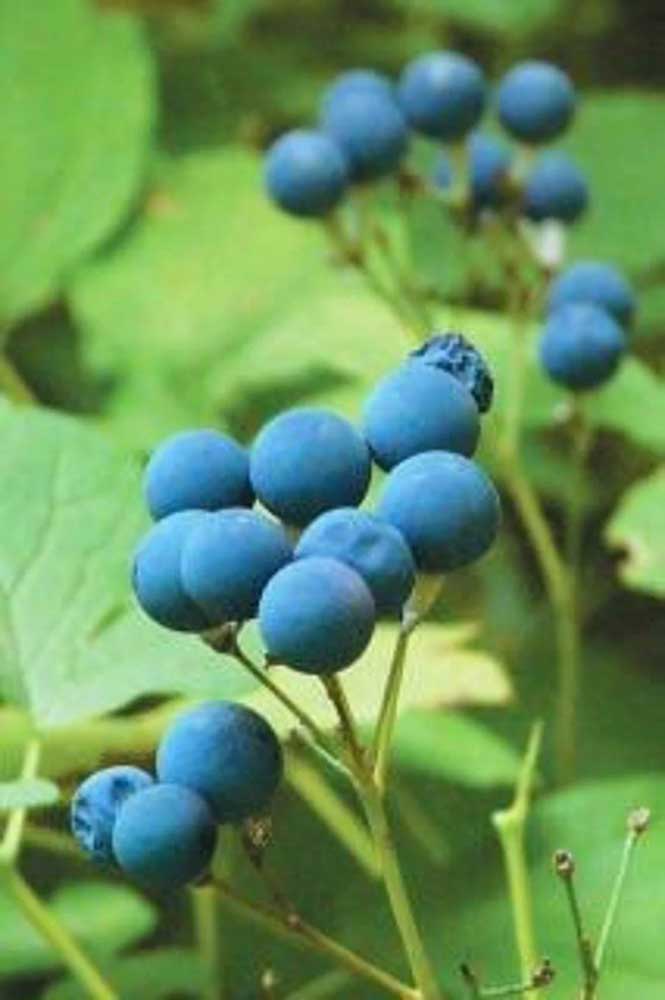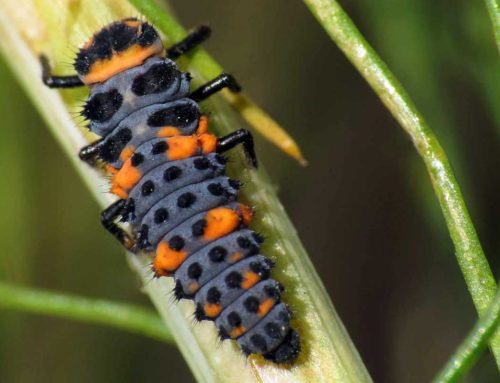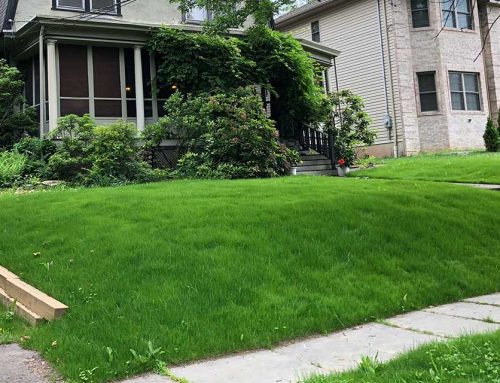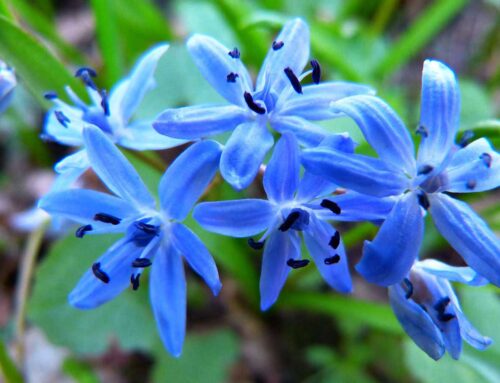Blue Cohosh – Caulophyllum thalictroides
Sustainable Landscaping with Native Plants
“We have allowed alien plants to replace natives all over the country. Our native animals and plants cannot adapt to this gross and completely unnatural manipulation of their environment in time to negate the consequences. Their only hope for a sustainable future is for us to intervene to right the wrongs that we have perpetrated.”
Blue Cohosh (Caulophyllum thalictroides) is a unique woodland wildflower native to eastern North America and is treasured for its lacy blue-green foliage and deep blue berries. This beautiful shade garden plant prefers a soil with abundant organic matter from decaying leaves and consistent moisture. A cluster of yellow flowers appears at the branching “Y” of the stem in spring, and gives way to the berries that eventually turn blue. The flowers attract pollinators, and the fruits are eaten by wildlife, particularly birds. Late season foliage turns bright green-gold.

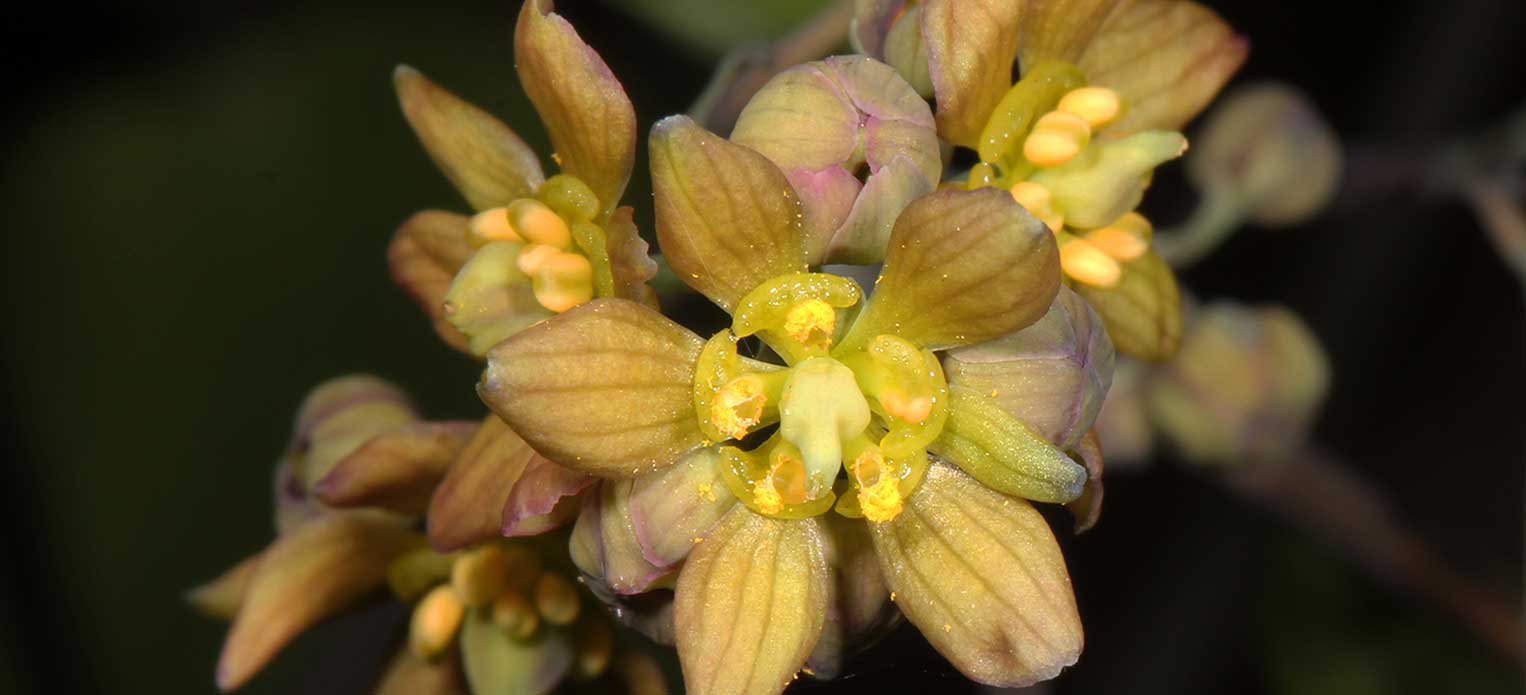
Blue Cohosh is quite tall for early flowering ephemerals, reaching heights of 3 feet in moister sites. It stands upright and remains sturdy throughout the summer months. For this reason, it works well massed in a woodland garden and the texture of the foliage contrasts nicely with ferns and later flowering woodland species. Also known as Yellow Ginseng, this woodland perennial has three seasons of interest! Smoky purple stems and yellow flowers in spring, attractive foliage and pale blue seeds in summer followed by bare stalks with cobalt colored seeds in autumn. Combine this shade-loving species with lower growing wildflowers and sedges.
The flowering plant Blue Cohosh belongs to the family Berberidaceae and species Caulophyllum. Other common names for Blue Cohosh are Caulophylle faux-pigamon, papoose-root, squaw-root, blue ginseng and yellow ginseng. This herb contains a stalk that possesses three branched leaves with various fruiting stalks. The base of leaflets resembles tulips and has distinct serrate flower tip. It bears fruits as berries that resemble blueberries due to the presence of bluish green foliage. The blossoms start to begin in early spring. Each flower measures 1/3″ across that comprises of insignificant petals, 6 petaloid sepals, 6 stamens with an ovoid ovary. The sepals are oblanceolate which might be greenish brown, greenish yellow or greenish purple that depends on local ecotype. From 3 to 4 green bractlets could be found underneath of each flower. The flower blooms from mid to late spring before the leaves are developed fully. Then the flowers are followed by the berry that is like seeds.
At Lincoln Landscaping cultivating the environment is our life and livelihood. It is our number one goal to help our clients create and maintain beautiful landscapes while reducing the impact on the environment. Whether you are interested in a pollinator landscape garden design and build or other landscaping or property management project; we can create for you an environmentally friendly, organic and beautiful property.
We Create Eco-Systems
Lincoln Landscaping of Franklin Lakes offers complete
organic landscaping, lawn care, turf and property management services.
Lincoln Landscaping “The Natural Choice”
Mike Kolenut President & CEO
https://lincolnlandscapinginc.com
(201) 848-9699


